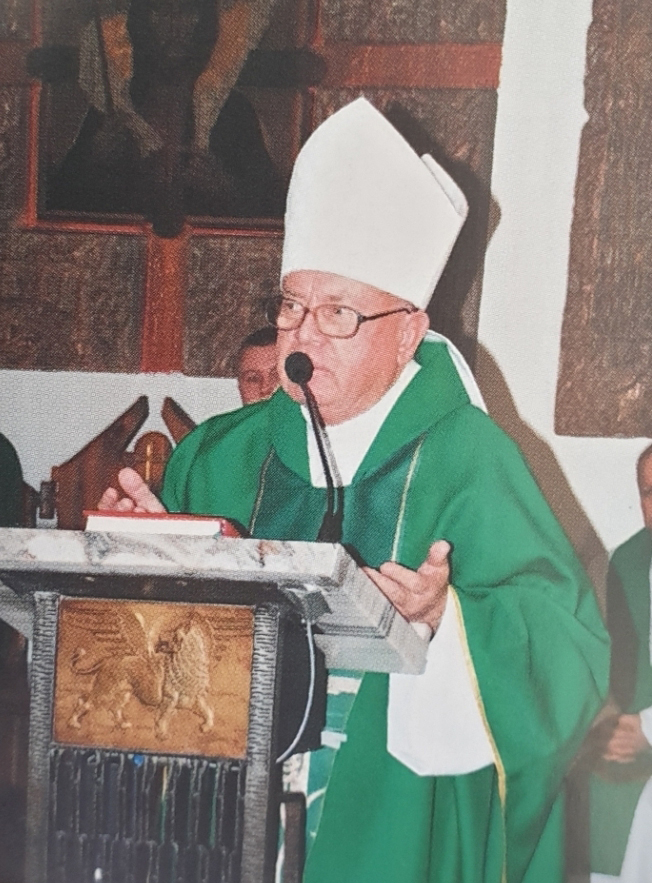It was one of the more unusual sights one might see in Eretz Yisrael. On one side of the courtyard outside the Franciscan Church in southern Yaffo stood a row of Catholic priests and monks; on the other side stood a minyan of chareidi Jews, along with other Jews. In the center, lay a plain wooden casket.
A young man, his tzitzis fluttering in the breeze, was standing right next to the casket. Turning away from the church, he began to recite Kaddish in a trembling voice for the neshamah of the niftar, Yaakov Tzvi ben Mendel. The casket was then lifted to continue its journey, first to the airport to fly to Poland, where it was transported to the city of Lublin, and from there to the nearby Jewish cemetery in Izbica.
This is a tale full of suffering, about a man with two names and identities who was torn between the Church and the shul, and between Eretz Yisrael and the blood-soaked land of Poland. It is the story of a Catholic priest who went by the name of Gregor Pavlovsky—but was in truth a Jew born into a chasidic family in Poland who was once known as Yaakov Tzvi Griner. It is a story that could only happen to a member of the persecuted Jewish faith.
My introduction to the story began with a visit to the Polish town of Izbica, where the Izhbitzer Rebbe, Rav Mordechai Yosef Leiner, zt”l, lived. Today, not a single Jew remains—other than those buried in the cemetery—and in the cemetery itself, there is hardly a matzeivah still standing other than the ohel over the Rebbe’s tziyun.
Or so I thought—until I got there and was surprised to see a big new matzeivah in red marble, complete with an inscription in both Hebrew and Polish. The text read:
“Father Gregor Pavlovsky, Yaakov Tzvi Griner ben Mendel and Miriam, z”l. I left my family in order to save my life during the Holocaust when they came to take us to be exterminated. My life, which they saved, I dedicated to serving G-d and man before returning to them, to the place where they were murdered al kiddush Hashem.”
The inscription on the matzeivah intrigued me, and I started to wonder about the conflicts this unknown person had faced throughout his life. I was even more intrigued when I discovered that no one was actually buried beneath the monument. The person whose name was inscribed on it was still alive, living in Israel and serving as a priest to the Catholic community in Yaffo.
I returned home, and a short while later made contact with this mysterious Jew, a relationship I maintained for the rest of his life. The first thing I noticed when I arrived at his home for the first time was that his double identity was reflected on the nameplate on his front door, which similarly bore both names.
This Jewish priest was a short man, dressed very simply and with a perpetual smile on his face. “What should I call you?” I once asked him. “Tzvi or Gregor?”
“You can call me Herschel,” he replied with a smile.





















